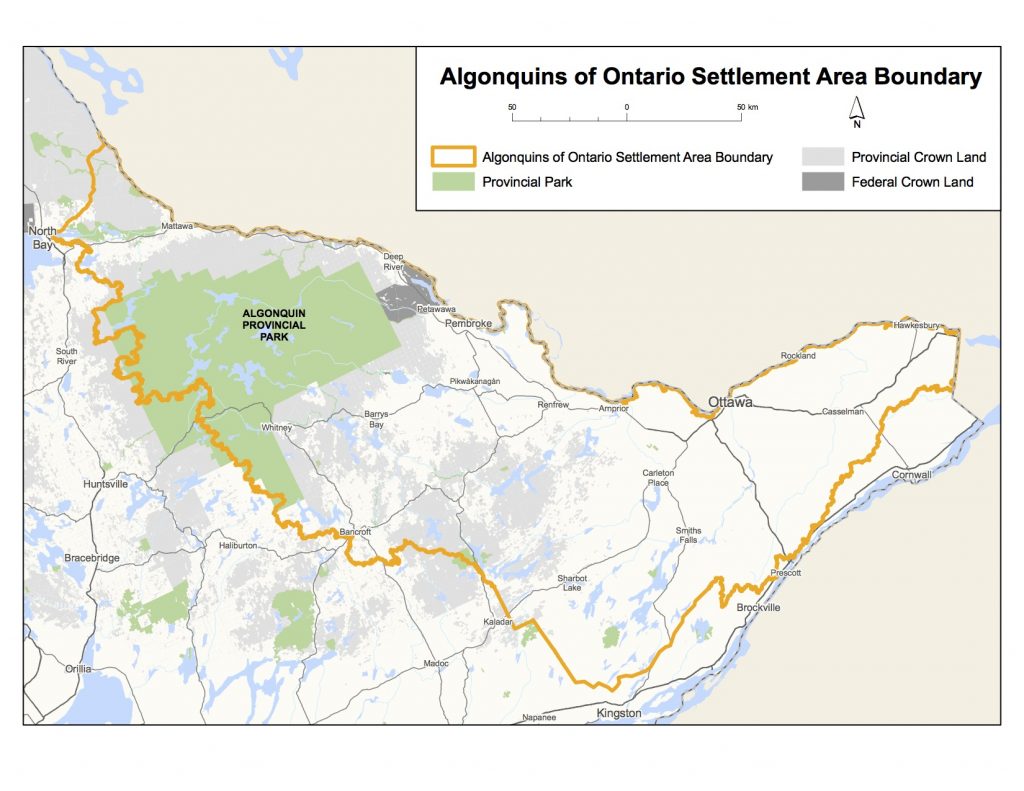Guidelines help municipalities craft respectful acknowledgements of Indigenous territory
By Louisa Simmons
Starting a public event in Ottawa with a declaration that those assembled are on the “unceded territory of the Algonquin people,” has become almost commonplace.
But crafting these statements is no easy task, and the need for guidance on creating sensitive, respectful acknowledgments led the Association of Municipalities of Ontario — the umbrella group serving city and town councils across the province, including the City of Ottawa — to publish a set of guidelines on the subject last month.
For Wendy Landry, chair of AMO’s Indigenous Relations Task Force, land acknowledgment statements should be about recognizing the history of injustice against Indigenous groups and building respectful relationships with municipalities.
“Acknowledging is respectful,” she said. “It’s acknowledging our history; it’s acknowledging our past; it’s recognizing the work we have to do to reconcile that past.”
The IRTF was created last fall and has representatives from about 10 different First Nations. It was formed to help municipalities in Ontario build better relationships with Indigenous communities.
Landry said one of the most important steps for municipalities creating their own land acknowledgment statements is to do their homework. She said this means working with Indigenous groups in the area and finding historical documentation to ensure that all Indigenous communities with a connection to the traditional land are recognized.
The City of Ottawa has taken steps to involve Indigenous communities in municipal proceedings, notably with the creation of the Aboriginal Working Committee in partnership with the Ottawa Aboriginal Coalition in 2007. Marc Maracle, chair of the OAC, said the coalition advocated for the creation of the committee to strengthen relationships between Indigenous people and municipal departments.
Maracle said that one way this relationship is being strengthened is through the city’s acknowledgment of traditional Indigenous land. These statements recognize the history of colonization but also the service rights of today’s largely urban Indigenous population, he said.
“When they go hand in hand, that goes a long way to making people feel more welcome, acknowledged, and participants in what we are as a municipality,” he said.
But advocates say land acknowledgment statements don’t just recognize the service needs of Ottawa’s Indigenous community, they also help bring awareness to the Algonquin land claim encompassing much of eastern Ontario.
Robert Potts is the principal negotiator and senior legal counsel for Algonquins of Ontario, the organization currently working through the land claim process with the province. The AOO claim spans an area of nine million acres, made up of 84 municipal jurisdictions — including the national capital.
Potts said the AOO’s task is to reach an agreement on a modern treaty that would establish a land base, address issues of land management and provide monetary compensation for the Algonquin people.
Acknowledging the rights of Indigenous groups to their traditional lands is a crucial step towards this goal, Potts said.
“What the statements that you see from elected officials do, is an acknowledgement of the beginning of that respect,” he said. “The more that First Nations are treated with the respect that they are due, the more likely it is that we will find solutions to these rather complex problems.”
While it may seem unlikely that a two-sentence statement published on a website or recited at a banquet will have an impact on Indigenous-municipal relationships, Maracle said that every small gesture counts.
“It’s never one big thing that’s going to make a difference in anything we do in life; it’s a million little things,” he said. “And this is one of those million little things that make us more connected.”

